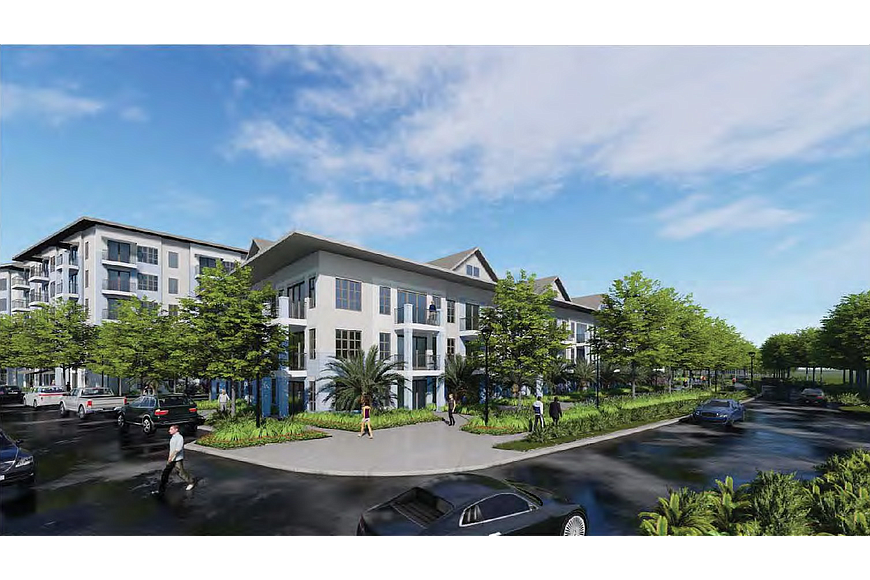- January 19, 2026
-
-
Loading

Loading

The dispute over Siesta Promenade, a proposed mixed-use development project, continued as those for and against the project each had 20 minutes Monday to present oral arguments in the 12th Judicial Circuit Court.
Sarasota County commissioners unanimously approved the project in December, and shortly after, Pine Shores resident Sura Kochman sued the county over what her suit claimed were “11 gross structural and procedural errors” in the approval process. Critics of the proposal have argued that developers and county leaders failed to consider the various areas of impact the project would bring, specifically traffic at U.S. 41 and Stickney Point Road.
Developer Benderson Development says that its collected data and testimony on how road and traffic infrastructure improvements would affect the area prove there wouldn’t be a significant traffic impact.
The proposal includes 414 residential units, 130 hotel suites, retail space, office space and 25 affordable housing units.
On Monday, both sides argued their cases in front Circuit Judge Andrea McHugh. No time frame for a ruling was given.
The plaintiff
Kochman sued in hopes of halting development with a reversal or remand of the County Commission’s approval of the project.
Ralf Brookes, the attorney for the plaintiff, contends that the proper process for approval was not followed by commissioners in December 2018. Brookes argued a critical area plan boundary was required but not done. Had a CAP been required, Brookes said the traffic analysis for the Promenade would have been wider in scope.
In 2018, Benderson and its associate for the multiuse project, Siesta 41 Associates LLP, petitioned for CAP approval for the project, which would enable them to build more dwelling units per acre than a traditional Commercial General zoning would allow. Additionally, the company needed approval for the vacation of a portion of the county road and to build a hotel on the lot.
Brookes argued that Benderson should have applied for commission approval of other aspects as well. For example, the hotel is proposed to be 80 feet tall, but board approval wasn’t sought to increase from 35 feet, the height the commission allowed for the site in December.
McHugh asked Brookes if there is any legal authority that requires the county to follow the CAP boundary procedure. Although Brookes said there is no case law that interprets the county’s flow chart for CAP boundaries, he argued that the fact that it’s in the county’s ordinance is sufficient.
Brookes said McHugh could remand the decision, which would mean the development would not move forward without what he called the “proper path.”
“This project will create adverse impacts in the county that have not yet been studied,” he said. “Simply saying that you’re going to do a future analysis before you begin is not satisfying the criteria; it’s kicking the can down the road.”
The defendant
Benderson attorney Robert Lincoln and assistant county attorney David Pearce argued that the Circuit Court lacked jurisdiction over the approval of the CAP boundaries and cited several previous cases.
Lincoln said that commission’s decision to approve the mixed-use development was a legislative decision and that a petition for writ of certiorari, what Kochman filed for, cannot contest a legislative action.
Lincoln said a CAP is similar to a comprehensive plan in that it is a decision about what sort of development is appropriate in a specific area. He contends that the County Commission, not the court, has the right to determine whether the CAP traffic analysis was sufficient to support its decision of approval.
Pearce cited a 2001 Florida Supreme Court decision in which precedent was set that “deference is owed to the local government due to its expertise in land-use planning.”
“The board knows the character and history of this specific area,” Pearce said. “That’s why they are elected officials. Thus, the courts do not determine whether the local government’s rezone decision or special exception is a wise decision.”
Pearce and Lincoln said that the plaintiff’s argument essentially asks the court to reweigh the evidence that was presented to commissioners and make the opposite decision, which they said the court cannot do.
Benderson received a land-clearing and earthmoving permit for the site from the county and began land clearing and removal of existing septic tanks on the site.
Currently, Benderson’s engineers are working on-site and working on applications for the development plan with Southwest Florida Water Management District and Florida Department of Transportation.